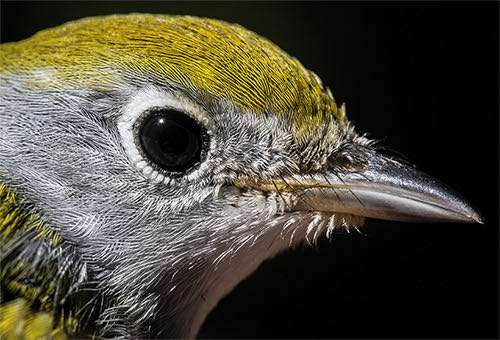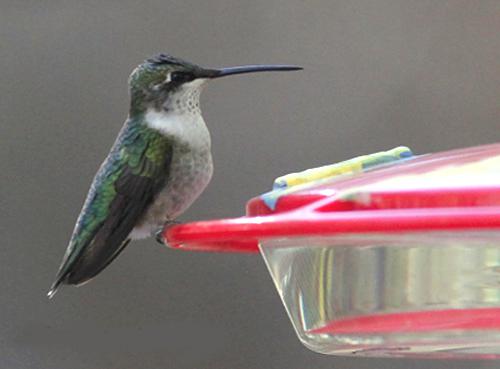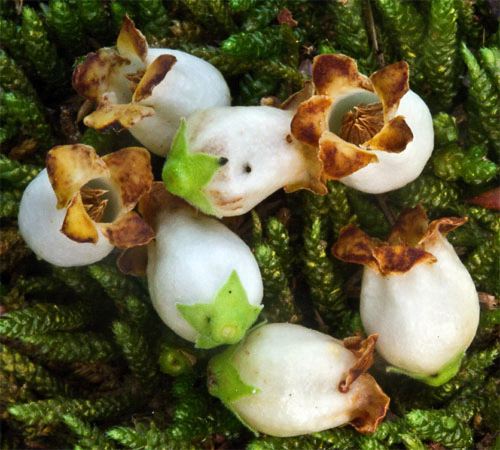- Established 1982 -HOME: www.hiltonpond.org
THIS WEEK at HILTON POND Subscribe for free to our award-winning nature newsletter (Back to Preceding Week; on to Next Week) |
FALL MIGRATION BEGINS WHILE The early half of September 2020 brought Hilton Pond Center's first real evidence for fall migration with the arrival of such Neotropical species as Tennessee Warbler, Northern Waterthrush, Swainson's Thrush, and Chestnut-sided Warbler--all immature birds. (Note the nearly indescribable yellow-green crown and back of the chestnut-sided in the image below.) Yes, we banded only one or two of each, but they presaged what we hope will become a torrent of southbound migrants in late September and early October. (Scroll to the bottom of this page for a list of all bandings and recaptures during the period.)
All text, maps, charts & photos © Hilton Pond Center In all we banded 87 individuals of 17 species from 5-15 September, but the sizable majority of them--56, to be exact--were just one species: Ruby-throated Hummingbirds, captured in mist nets or pull-string traps. This brought our 2020 total for RTHU to 235--an exciting 137% of our 37-year annual average for hummers banded through mid-September. That also made the current banding season our 12th time to go over 200 bandings and our sixth-best year since 1984--with at least three weeks to go before hummers are mostly gone. (CAVEAT: Ruby-throat numbers at the Center typically drop precipitously after 15 September, so the bulk of our hummingbird work for this year is likely finished.)
All text, maps, charts & photos © Hilton Pond Center We banded banded two adult male Ruby-throated Hummingbirds during the period, one on 6 September and another the following day. Most red-gorgetted adult males are already long gone; they begin leaving North America for the Neotropics as early as the first week in August, and historically we've banded only two after mid-September. This year we handled three adult female RTHU from 5-15 September--compared to our 22 immature females and 29 young males like the heavily streaked and partially red-gorgetted one above. Hatch year males are typically the last to leave each fall. Day-by-day Ruby-throated Hummingbird banding tallies for 5-15 September 2020 were as follows:
Stay tuned for final results for the 2020 hummingbird season that probably will end on or about 18 October--our latest date ever for a new RTHU banding.
All text, maps, charts & photos © Hilton Pond Center NOTE: About this time of year we often get questions from folks wondering when to take down their hummingbird feeders. Although some enthusiasts are afraid keeping feeders up will stop hummers from migrating, this is unlikely to be the case for any birds except those that might be ill and unable to survive migration in the first place. Ruby-throated Hummingbirds (immature male, above) have been migrating like clockwork each fall for hundreds of thousands--perhaps millions--of years, apparently prompted by shorter day-length in autumn to make their southbound trip. Keeping a feeder up won’t hinder that behavior. If you're tired of making sugar water, you might take down feeders by Halloween, but we always suggest you freshen one feeder for as long as you can through the winter. You never know when you might attract one of those western vagrant hummingbirds that sometimes show up after the ruby-throats have departed. If you're east of the Misissippi and get a hummer after 15 October, please let us know via e-mail at RESEARCH. All text, maps, charts & photos © Hilton Pond Center BIRTHDAY ODE TO PERSIMMONS And on to a more personal note by Bill Hilton Jr., about persimmons: The Goddess (aka Sue Ballard Hilton) had to be out of town for my 74th birthday on 15 September 2020, so I was left to fend for myself. Not being a gourmet chef, I decided my celebratory dinner would be a feast of natural foods--so I wandered the woods collecting wild provisions. Alas, because the Black Walnuts and Shagbark Hickory nuts were too hard to crack, I had to limit myself to a one-course meal consisting of delectable fruit from a Common Persimmon, Diospyros virginiana.
All text, maps, charts & photos © Hilton Pond Center We have two mature persimmon trees at Hilton Pond Center. One out by the driveway is quite tall, reaching into the canopy. It has few limbs and makes a limited number of fruits each fall, each less than an inch in diameter. (I suspect this venerable giant is past its reproductive peak.) A second tall 'simmon tree down by the pond flowers prolifically each spring but never makes any fruit. I finally figured out that was because persimmons are dioecious, with each tree being either male or female (male flowers below, from early summer). To get a yield, you have to have at least one tree of each sex--and only the female tree bears fruit.
All text, maps, charts & photos © Hilton Pond Center A third persimmon tree right behind the old farmhouse is much younger and only about 20 feet tall. I remember deciding not to cut it when it was a little sapling about 12 years ago, and it has rewarded me handsomely for that decision. The tree is already in its prime, this year producing a bumper crop of big, succulent fruits more than an inch and a half in diameter. When I went out as a food-scavenger for my birthday, there were several dozen ripe fruits on the grassy area beneath the tree, so it was a simple matter to gather enough of them to make a bowlful for supper. A lot of people don't care for fruit of the persimmon tree, usually because they had the unfortunate experience of biting into one before it was ripe and ready. Such action begets unforgettable results, for unripe 'simmon fruit is laden with an astringent chemical that will pucker you up. My secret is to wait for the fruit to fall to the ground; it's usually ripe by then--especially if it has a frosted exterior and splits open a little on impact. Brush off the dirt and an ant or two, and it's some of the sweetest, best eating wild food there is. After my persimmon orgy I went out the next morning to get a few more 'simmons for breakfast. Nope, there were none to be found. NOTE 1: Common Persimmon's genus name Diospyros is Greek for "food of the gods!" NOTE 2: The Goddess did bake me a chocolate cake before she departed, so I had birthday dessert to complement my wild 'simmons. All text, maps, charts & photos © Hilton Pond Center Image post-processing via DeNoise AI, Sharpen AI, and other Topaz Lab tools
Checks also can be sent to Hilton Pond Center at: All contributions are tax-deductible on your Don't forget to scroll down for Nature Notes & Photos, |
|---|
|
"This Week at Hilton Pond" is written and photographed by Dr. Bill Hilton Jr., executive director of Hilton Pond Center for Piedmont Natural History
|
|
|
Please refer "This Week at Hilton Pond" to others by clicking on this button: |
|






 Almost certainly nocturnal creatures--Virginia Opossums
Almost certainly nocturnal creatures--Virginia Opossums 









 Please report your
Please report your